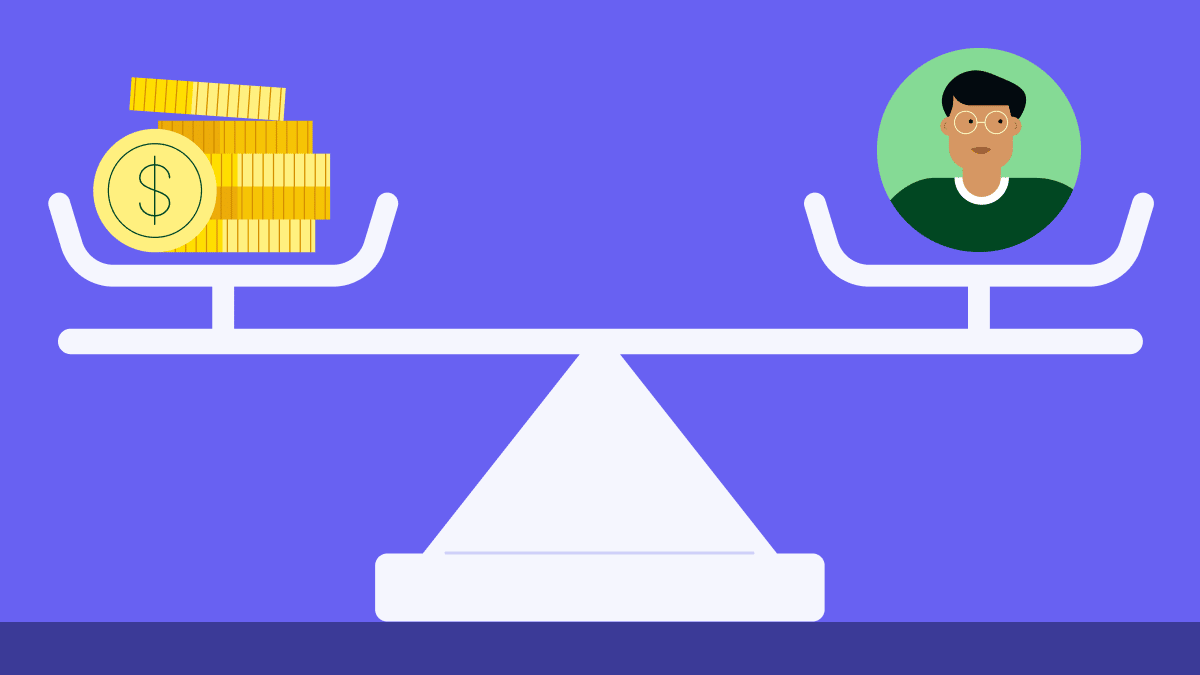Winning new clients is the lifeblood of any growing business, but finding the right ones efficiently can be a challenge. A strong client acquisition strategy turns this challenge into an opportunity by aligning your marketing efforts and overall marketing strategy with your sales processes.
This article goes beyond a basic overview to share strategic frameworks and AI-powered best practices. You’ll also discover ways to align your funnel with data so you always know what’s working and what needs to improve.
Key takeaways
Client acquisition is the process of attracting and converting potential clients into paying customers.
AI and automation help reduce client acquisition cost while increasing efficiency and accuracy.
Tools like Pipedrive centralize client data, automate follow-up and help teams close more deals faster.
Start your free 14-day Pipedrive trial to master client acquisition today.
What is client acquisition?
Client acquisition refers to the process of attracting and converting potential customers into paying ones through marketing campaigns and sales efforts.
Acquisition covers every step from lead generation to onboarding and long-term relationship building.
While customer acquisition often applies to retail or product-based businesses, client acquisition focuses on service-based providers like consultants, agencies and tech firms.
For example, a digital marketing agency might combine LinkedIn outreach, search engine optimization (SEO) and email marketing to win new clients, then use a CRM like Pipedrive to track engagement and automate follow-ups.
Having a clear client acquisition definition and process helps teams understand where prospects come from, how they convert and what drives repeat business.
Why client acquisition matters
Client acquisition drives sustainable business growth by turning potential clients into lasting relationships that generate recurring revenue.
As selling becomes harder, building a reliable client acquisition strategy helps teams hit targets even when performance trends downward.
According to Pipedrive’s State of Sales and Marketing report, sales performance is slipping across industries.
In 2024, only 57% of salespeople reached their sales targets, four percentage points lower than the previous year and seven points lower than in 2021.
The research highlights how essential structured acquisition efforts have become for modern businesses.
A strong client acquisition process matters because it:
Brings in a steady flow of new customers to keep your business growing
Ensures alignment between marketing and sales teams
Reduces wasted spend by improving targeting and outreach
Enhances brand awareness among qualified leads
Increases client lifetime value through stronger relationships
To stay competitive, businesses must focus on efficient customer acquisition strategies that reduce customer acquisition cost (CAC) while improving retention and reducing churn over time.
Some companies accelerate this work by bringing in client acquisition services that handle targeting, outreach and qualification to keep pipelines healthy without increasing internal workload.
Find more of the best leads fast with your lead qualification ebook
How AI is changing client acquisition
AI is transforming client acquisition by enhancing every stage of the sales process, from identifying qualified leads to closing deals.
Companies that integrate generative and predictive AI into their sales functions see up to 1.8 times higher margin improvements through revenue growth and efficiency gains.
The same report highlights that leading organizations are already scaling AI in B2B sales to boost seller productivity and reshape the customer experience.
In practical terms, AI makes it easier for businesses to:
Automate lead scoring and lead qualification to focus on high-value prospects
Personalize outreach across social media and email campaigns
Predict deal outcomes and suggest next actions for faster conversions
Optimize content and landing pages through data-driven A/B testing
Automate admin tasks like follow-up and pipeline updates to save time
Modern CRMs like Pipedrive now embed AI features designed specifically for client acquisition.
For example, Pipedrive’s Notifications feature helps you stay on top of your sales activities with smart suggestions, email summaries and AI-powered tips.
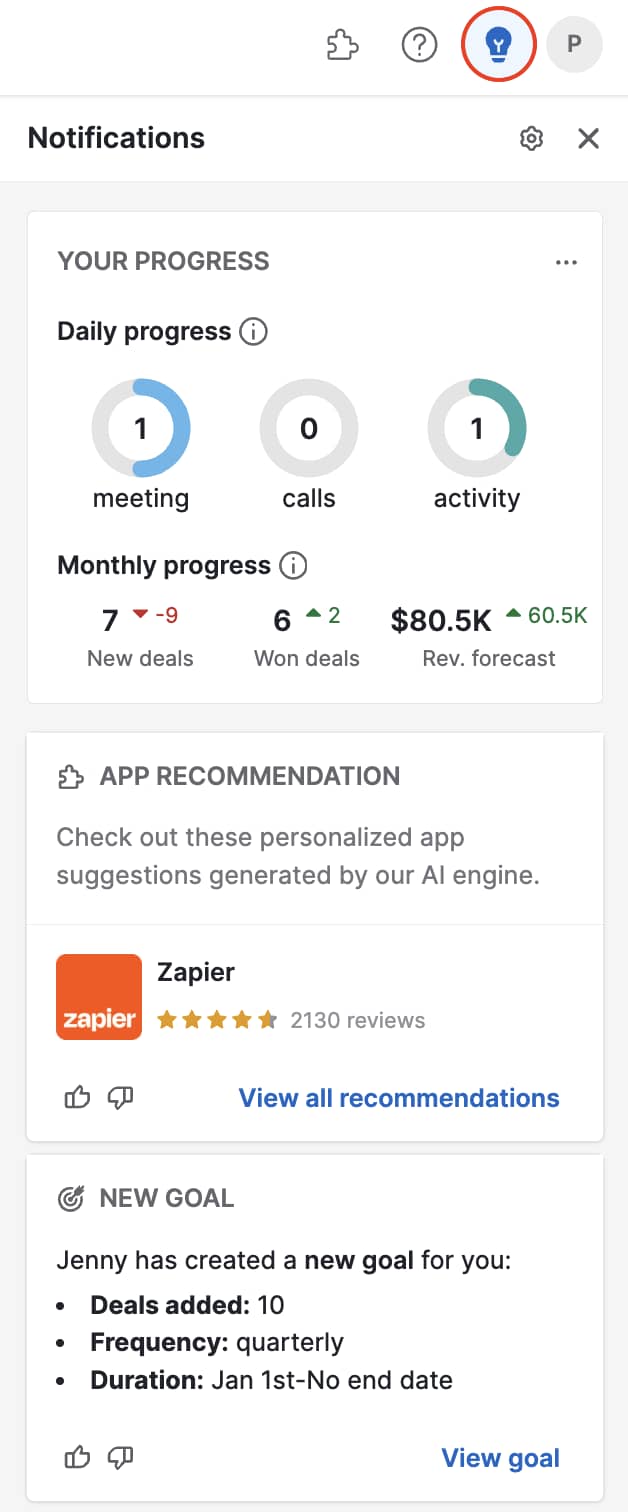
Pipedrive’s AI email writer crafts personalized emails based on simple prompts.

AI tools help businesses acquire new clients more efficiently, reduce manual work and keep acquisition efforts focused on the best opportunities.
Did you know? Pipedrive’s AI suite includes additional capabilities, such as AI-generated reports, AI-powered marketplace search and more.
The client acquisition funnel (and how to map it to your business)
Every business needs a clear path that guides potential clients from first contact to signed contract.
That path is the sales funnel, a framework that helps you visualize where an acquisition client is in their journey and what actions move them closer to becoming paying customers.
The video below gives a clear explanation of what the funnel is.
Understanding this funnel allows teams to align and contribute to expanding and retaining your customer base.
Here’s a look at the high-level funnel stages and how you can build your strategy around them.
1. Awareness
The awareness stage is where potential clients first discover your brand.
Your goal is to capture attention and build brand recognition among your target audience.
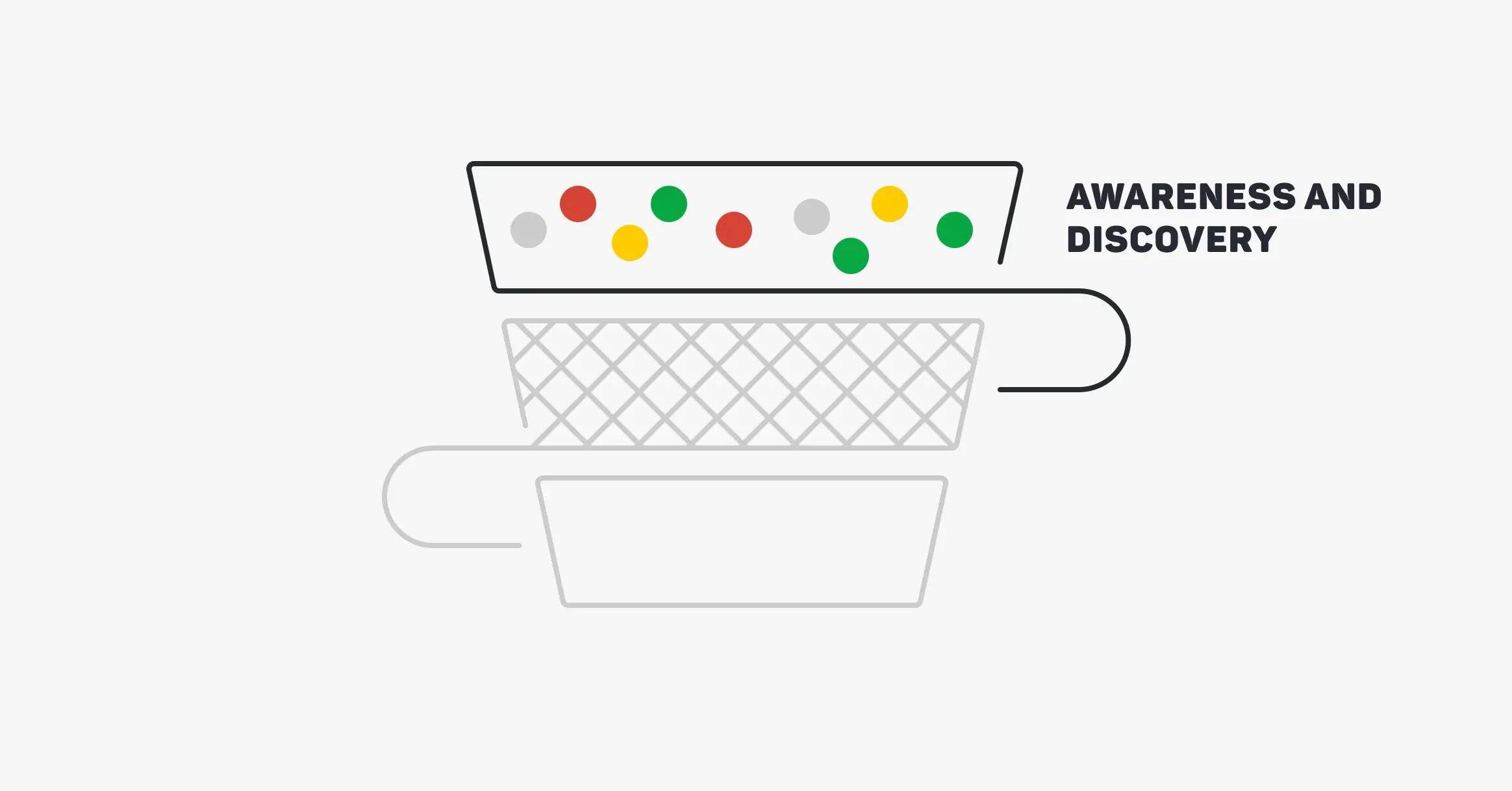
This stage is where content marketing, SEO, social media marketing and PPC play a major role.
The focus should be on offering valuable content that educates rather than sells. You want to help prospects understand a problem and position your business as a trusted expert.
Tip: Targeting your content to the right demographics (such as industry, region or role) helps your marketing efforts reach people most likely to engage with your brand.
For example, a B2B consulting firm might publish blog posts or host webinars explaining how to reduce client acquisition costs or improve conversion rates.
These activities attract qualified leads who are actively searching for solutions.
How to map it to your business: Identify where your audience spends time and what topics they care about most.
For example, you could use SEO tools to find high-intent keywords, then create helpful content that answers those queries. You might speak to customers and build out a content marketing strategy based on their most common pain points.
Meeting clients where they are builds early-stage trust and drives consistent organic traffic into your funnel.
2. Consideration
The consideration stage is where potential clients start researching solutions and evaluating whether your business is the right fit.
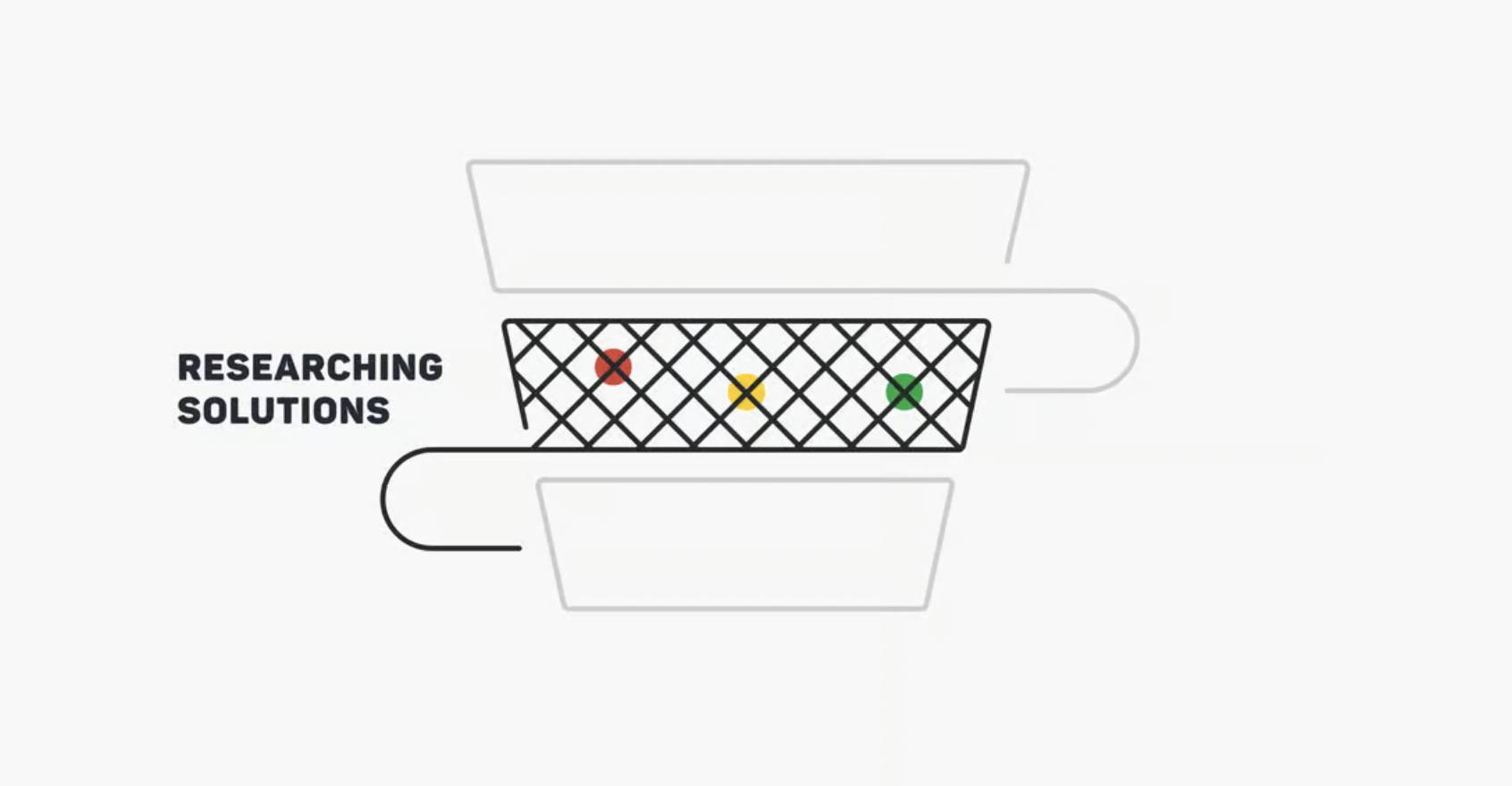
Your audience already understands their problem. They’re now comparing options, pricing and results.
Your goal is to demonstrate credibility, highlight your unique value and show clear proof that you can deliver outcomes.
This stage is where email marketing, case studies, product demos and comparison guides can make a difference.
For example, an agency might share a case study demonstrating how it reduced a client’s acquisition cost by 25% through automated outreach and CRM integration.
This type of evidence helps build trust and move prospects closer to conversion.
How to map it to your business: Focus on nurturing leads with relevant, educational content that shows the impact of your solution.
Use your CRM to segment potential clients by interest or stage, then personalize follow-ups with testimonials, product walkthroughs or ROI calculators that prove your value.
3. Conversion
The conversion stage is where potential clients make their final purchase decision to become paying customers.

At this point, trust and timing matter most. Your goal is to make the buying process simple, seamless and confidence-building.
Tactics like free trials, clear pricing pages and one-to-one consultations help remove friction and encourage commitment.
For example, a software company might offer a 14-day free trial with guided onboarding to show immediate value.
For e-commerce businesses, optimizing checkout flows, improving page speed and adding trust signals like reviews can dramatically increase conversion rates and reduce cart abandonment.
How to map it to your business: Review your current sales process and identify where prospects hesitate or drop off.
Use CRM data to track conversion rates and test different approaches, such as shorter forms, faster follow-ups or automated reminders.
These kinds of improvements to the bottom of your funnel make it easier for potential clients to say yes.
How to create a client acquisition strategy that works
For small and medium-sized businesses, a clear client acquisition strategy is essential to compete and grow efficiently.
Here’s how to get started.
Define your ideal client profile (ICP)
Your ideal client profile, or ICP, describes the type of customer who benefits most from your product or service.
A precise ICP includes firmographics (company size, industry, revenue) and psychographics (pain points, goals and buying motivations).
Grouping your audience into clear customer segments based on these traits helps tailor your outreach and ensures each campaign speaks directly to their needs.
Larger teams sometimes rely on a dedicated client acquisition specialist to manage segmentation and improve early funnel consistency.
See the example below of an ICP for a B2B SaaS company.
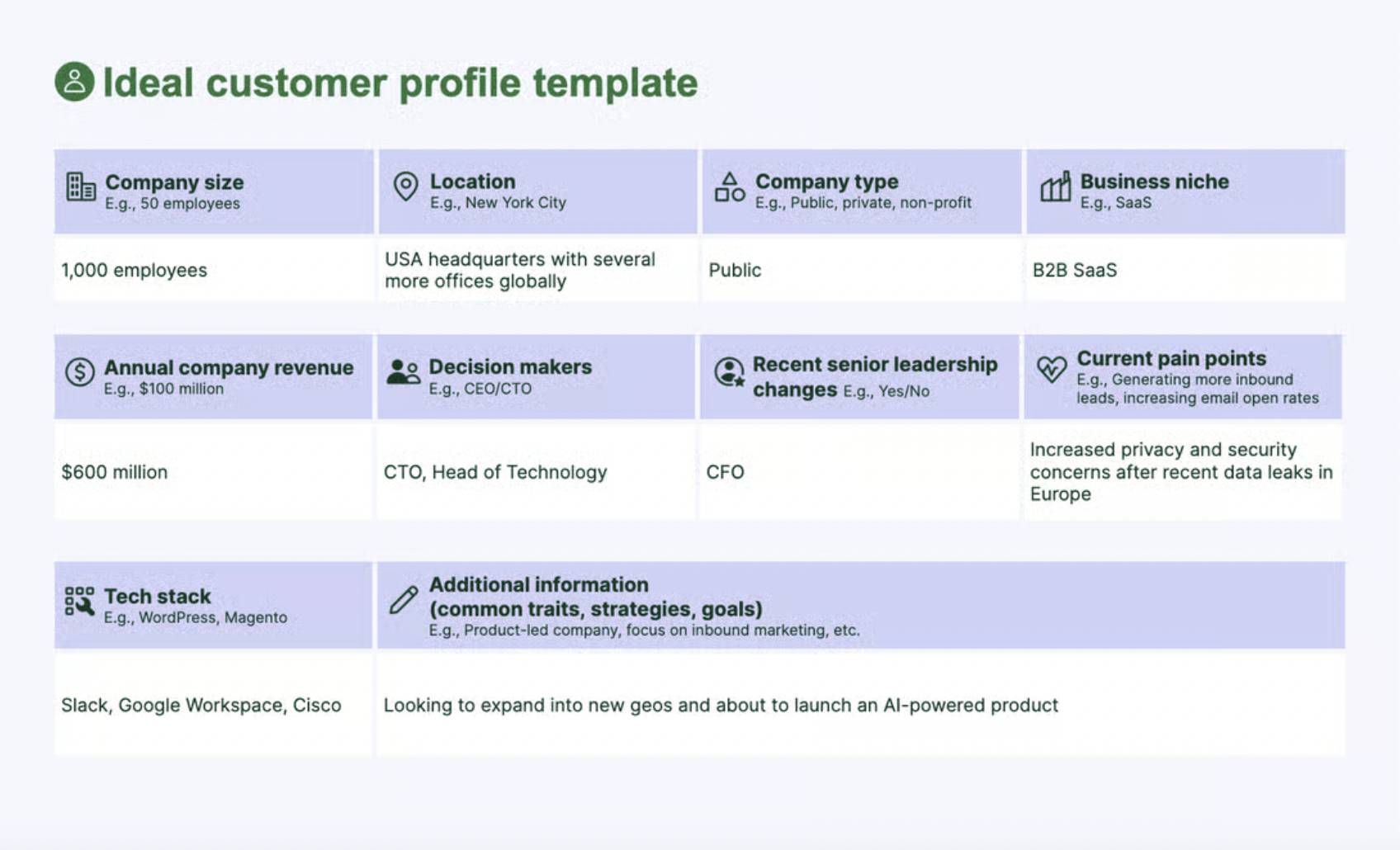
To build out your own ICP, start by analyzing your existing customers.
Look at data in your CRM to find patterns among your most profitable clients, such as deal size, industry or average sales cycle length.
Combine that with insights from sales and customer support teams to understand what drives satisfaction and retention.
Once you’ve gathered enough data, turn those insights into a clear persona profile.
For instance, a B2B SaaS company might find that its best clients are mid-sized tech firms with small sales teams looking to automate manual workflows.
This level of detail ensures your outreach, messaging and pricing all align with real customer needs.
Tip: Mapping your ICP to acquisition channels is key. Use data from social media platforms, SEO and email campaigns to identify where your ideal clients spend time online. Then adjust your acquisition efforts to focus on those channels.
Create measurable goals tied to your pipeline and revenue
Once you know who your ideal clients are, the next step is to set goals that directly support revenue growth.
These goals should connect marketing activity to measurable outcomes, such as new client acquisition rate, conversion rate or customer lifetime value.
Start by breaking down your overall revenue target into smaller, actionable metrics.
A client acquisition manager can use these metrics to track progress and optimize the pipeline.
For example, if your goal is to increase revenue by 20%, calculate how many qualified leads you’ll need each month to reach that figure based on your current conversion rates.
This calculation helps you identify the right balance between lead generation, nurturing and deal-closing activities.
Pipedrive’s sales reporting software can help visualize these KPIs for sales, showing how acquisition channels perform and where improvements are needed.

Having these insights in one place lets you adjust strategy quickly without wasting time or budget.
Tip: Keep goals simple and connected to outcomes that matter most: revenue, deal velocity or qualified leads. Review them monthly and adjust based on real data, not assumptions.
Craft value propositions and messaging that resonate with each segment
Once your goals are in place, the next step is to communicate why your business is the right choice for your target audience.
A strong value proposition speaks directly to client pain points and shows how your product or service delivers measurable results.
Start by identifying the specific challenges your ideal clients face.
Use insights from CRM data, customer interviews and feedback from your sales team to uncover what matters most. Findings might include saving time, reducing costs or improving efficiency.
Then, craft messaging that highlights how your solution meets those needs.
For example, a marketing agency might position itself as “helping startups automate lead generation to lower acquisition costs and close deals faster”.
This kind of focused message connects directly to real client objectives and differentiates you from competitors.
Tip: Test your messaging through A/B testing across different channels: email, landing pages and social media. Use performance data to refine your tone and value propositions until you find what drives the highest engagement and conversion.
Choose acquisition channels based on data
Selecting the right channels determines how efficiently you reach and convert potential clients.
For SMBs with limited resources, it’s vital to focus on what actually works rather than chasing the latest marketing trends.
Tip: For businesses testing new markets or scaling quickly, partnering with a client acquisition agency can offer extra expertise and faster experimentation.
Start by reviewing which channels bring in high-quality leads.
Look at metrics like CAC, conversion rate and lifetime value for each.
Here’s the client acquisition cost formula:

For example, you might find that SEO and email marketing outperform paid ads or that LinkedIn outreach delivers stronger engagement than broad social campaigns.
These insights help you prioritize time and budget on the most productive acquisition channels.
Tip: Use your CRM to track every touchpoint (from the first interaction to closed deal) and identify which channels drive the most conversions. Over time, this data helps you fine-tune your client acquisition strategy and allocate resources where they’ll have the biggest impact.
Core channels to guarantee client acquisition success
The right mix of channels helps you connect with clients at the right stage of their customer journey, guiding them from initial interest to long-term partnership.
Below is an overview of the core channels most SMBs can use to attract and convert new business.
| Acquisition channel | Overview |
| Inbound marketing | Focuses on attracting potential clients organically through valuable content, SEO and social media. Ideal for building authority and long-term visibility. |
| Paid acquisition | Includes search ads, paid social and retargeting campaigns. Useful for quick lead generation but requires close tracking of client acquisition cost. |
| Partnerships and influencers | Uses your network and satisfied clients to generate warm leads. Builds trust faster and typically lowers acquisition cost. |
| Outbound | Involves structured prospecting, cold emails and LinkedIn outreach. Best for reaching specific high-value targets with personalized messages. |
| Events | Includes webinars, trade shows and online communities. Helps establish credibility, build relationships and drive word-of-mouth growth. |
Each channel contributes differently to your overall acquisition funnel. SMBs can combine two or three of these approaches to increase the chances of long-term success.
How Pipedrive helps you master client acquisition
Client acquisition is far more effective when your tools work together in one place.
Pipedrive is customer relationship management (CRM) software that helps small and medium-sized businesses connect marketing and sales efforts into a single, automated system.
Let’s explore some of the specific Pipedrive features that give every SMB an advantage.
Capture and nurture leads automatically across channels
Pipedrive makes it easy to collect leads from multiple sources, including web forms, chatbots and email campaigns and feed them directly into your CRM.

Once captured, leads are automatically assigned, tagged and nurtured through personalized workflows that keep your brand top of mind.
For example, if you’re a digital agency, you can set up automated email sequences for new inquiries or trigger follow-ups when a prospect engages with your content.
These kinds of automations ensure every potential client receives timely communication without your team needing to manage each touchpoint manually.
Use AI to prioritize the most valuable opportunities
Pipedrive’s AI tools help you focus on the prospects that matter most by analyzing deal patterns, engagement data and historical performance.
Pipedrive’s Notifications feature highlights which deals are most likely to close and provides recommendations on when to follow up or what actions to take next.
It also spots potential risks, such as deals going cold or inactive leads that might still convert with the right outreach.
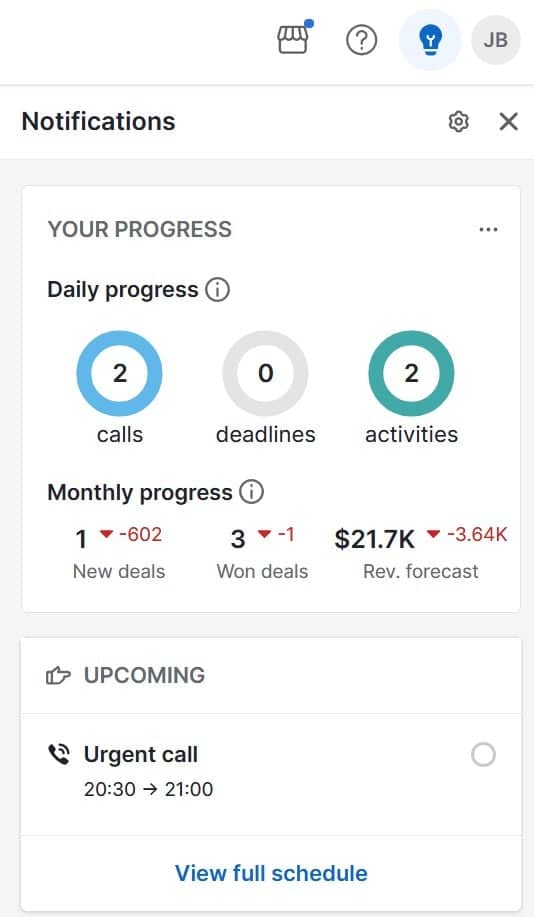
For SMBs like law firms, it means attorneys can spend time on prospects with the strongest legal fit and highest likelihood of retaining counsel.
Over time, these insights improve conversion rates and reduce client acquisition costs.
Visualize the entire acquisition pipeline
Pipedrive’s visual pipeline management software gives SMBs a simple, drag-and-drop interface to track every opportunity from first contact to closed deal.
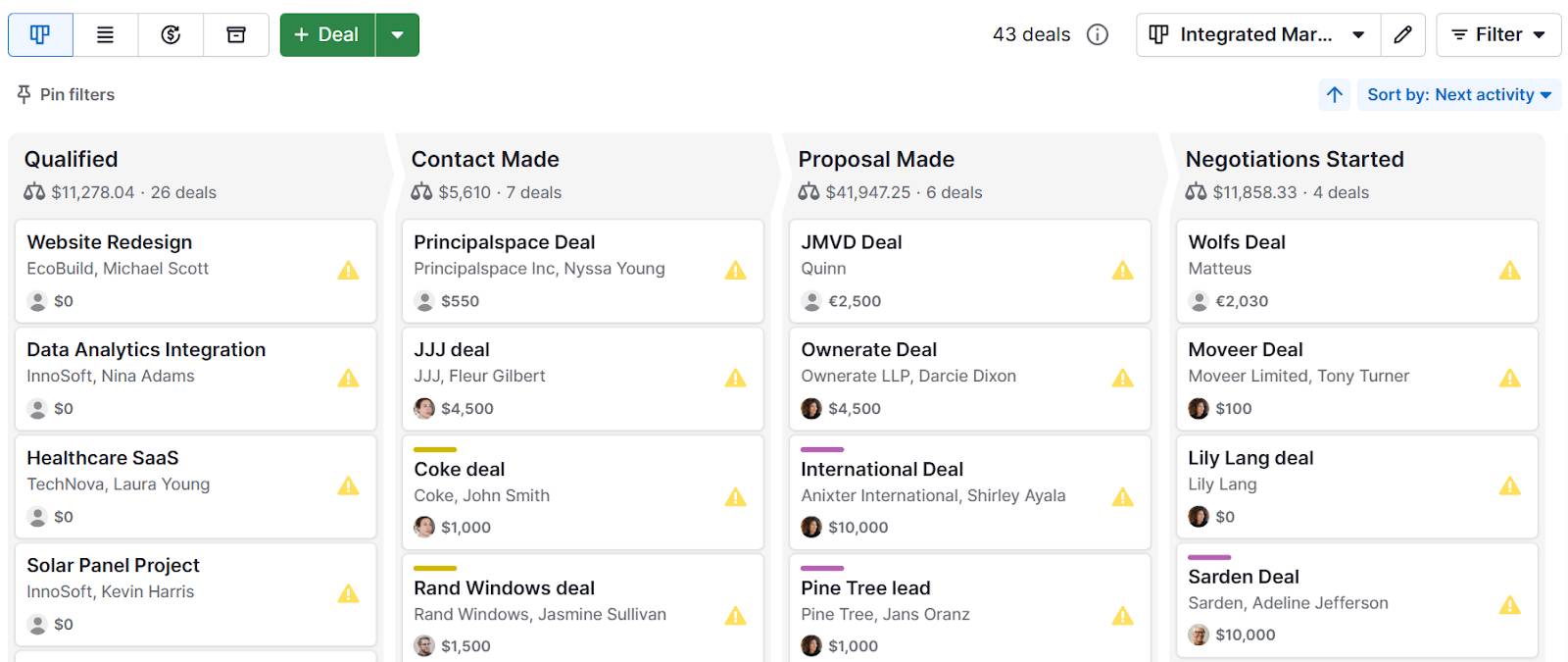
Each stage of the pipeline can be customized to reflect your specific acquisition process, helping you see exactly where prospects stand at any moment.
For example, a recruitment agency can track candidates and employer leads in a single view, making it easy to see which roles are moving forward and which need outreach.
With this visibility, it becomes easy to spot bottlenecks, like leads stalling in the proposal stage or deals that need follow-up.
When everyone sees the same data, it’s easier to stay aligned, act quickly and keep acquisition efforts moving smoothly from lead to conversion.
Automate repetitive sales tasks
Pipedrive lets you set up automation campaigns to keep sales and marketing focused on building relationships instead of managing admin work.
You can set up workflow automations that automatically move deals through stages, send personalized follow-up emails or schedule reminders when a lead goes inactive.

Integrations with tools like email marketing platforms, project management software and accounting systems keep data synced across your tech stack.
A cybersecurity firm, for example, can trigger instant alerts and follow-up tasks when a prospect requests a vulnerability scan, keeping the sales cycle moving.
For SMBs, this automation means faster response times, fewer missed opportunities and a smoother experience for potential clients.
Pipedrive in action: How Tiffany Largie grew her business from nothing to $2.5 million
Successful entrepreneur and business coach Tiffany Largie needed a better way to manage leads, track relationships and grow her coaching business.
Her team relied on manual processes and spreadsheets, which made it hard to follow up consistently and close new deals. The lack of visibility into client interactions slowed growth and created unnecessary admin work.
After switching to Pipedrive, Tiffany’s team gained full visibility into their acquisition funnel.
They used automation to streamline lead tracking and send timely follow-ups.
Pipedrive’s AI-powered tools helped the team identify which leads were most likely to convert.
Sales pipeline management tools gave them a clear view of deal progress.
Result: The company tripled its conversion rate and saved hours each week on manual data entry.
With Pipedrive, the business built a predictable system for acquiring clients. According to Largie:
"It’s literally one of the only things that I recommend you have in order to successfully manage your business. We had one of our newer clients, an accounting firm that has been in business for around 20 years, go through an exercise of finding prospects on Pipedrive. After a few hours, the firm’s representative contacted us and said, ‘I just found $188K worth of revenue thanks to Pipedrive!"
The success of Largie’s coaching business shows what’s possible when client acquisition is built on automation, visibility and data-driven decisions.
Final thoughts
Client acquisition doesn’t have to be complicated. With the right strategy, clear data and tools that automate the busywork, SMBs can build predictable systems that turn prospects into loyal clients.
Pipedrive brings structure, insight and automation together to help businesses grow faster and more efficiently. Whether you’re improving your funnel or scaling into new markets, Pipedrive keeps your acquisition process simple and effective.
Try Pipedrive free for 14 days to start mastering client acquisition today.
